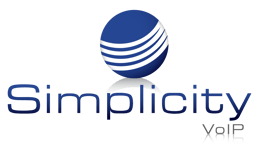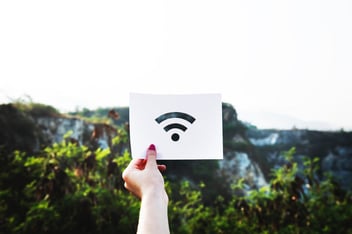What to Do If Your Caller ID Shows Up as "Potential Spam"
For businesses, especially those involved in sales or marketing, making calls to prospective clients is vital for everyday operations. The first challenge is persuading prospects to answer the phone, so having your telephone number flagged as "Potential Spam" can ruin your pitch before it ever even begins. Below, we discuss this growing challenge and concern among businesses and the steps you can take to prevent it from happening to you.
First of All, What is Spam?
Spam is harmful, irrelevant, or inappropriate communications and messages. The best way to avoid being labeled as "potential spam" is to avoid conducting business processes in a "spammy" manner. While it sounds obvious enough, many new technologies automatically work to protect consumers from these communications. Remember to evaluate your audience and speak to them in their preferred method.

Why is My Number Being Flagged?
With rising technological innovations to identify unwanted calls and assess for spam activity, the number of spam calls has significantly decreased. Additionally, new regulations require companies to reduce spam calls before the full rollout of STIR/SHAKEN procedures that are in place to detect them. As a result, many of these calls labeled as spam are reported to multiple vendors and not to a single establishment.
However, many telephone and communication providers have also introduced company-specific systems that will automatically protect their clientele without needing to sign up for a new program or download a new app. With this, however, more and more calls that are not spam are being flagged as such; and more and more people are wary of unknown numbers thanks to viral hackers and scams.
Providers should design their "spam detection" software very carefully and decide the best way to inform customers about problematic calls. Because providers have no universal spam detection template, each company chooses what gets flagged and what doesn't. This means that two different providers could receive the same phone number and could be completed normally on one, while the other issues a "potential spam" label for the incoming number.
Generally, providers are using the following criteria when flagging for potential spam calls:
- How many calls per hour or day that a single number is making
- The rate of successful connections made
- If and when a call recipient reports the number as spam or harmful
What Can I Do So That My Number is Not Flagged as Spam?
Given the general criteria above, there are a few things you can do to try to avoid any carrier flagging your phone number.
#1. Make sure you conduct cold and warm calls from the same phone number. The colder the calls, the less likely the call will be answered, so be sure only to use a specific number to call new or potential customers, or else your low connectivity rate could prove detrimental.
Be sure to incorporate as many warm calls as you can during your workweek. Warm calls are more likely to have someone pick up and keep your overall rate of successfully connected calls up! There is plenty of software and platforms that can help you keep track of these things as well.
#2. Use Multiple Numbers
By using several different phone numbers to conduct calls throughout the day, you can limit the rate of calls per hour and day placed by a single telephone number. You will most likely want to use the prospect's personal phone number for warmer leads or if you have some sort of existing relationship.
#3. Be cognizant and considerate about how you are approaching a new or prospective client. If your approach comes off as "spammy" in even the slightest way, they may end the call and even report the number. Especially if you are conducting a cold call, it is even more important to make a carefully articulated approach rather than calling multiple times; you need to be adequately prepared for if/when they pick up the phone. Consider the following when planning out how to best communicate with your prospect:
- Consider sending custom emails ahead of your call(s). This will introduce you and your company, your missions, and services and products. This communication effort may be why your prospect answers the call in the first place and stays on the line with you or your representative. Be sure to include photos or other visuals in the email too.
- Carefully plan out a voicemail to leave should your prospect not answer; you or your agents don't want to be scrambling to find the right words or have a script that sounds monotone and impersonal. Additionally, having a personalized voicemail or even leaving a voicemail is a helpful defense in getting tagged as a spam number. Even if your prospect chooses not to interact with you, they are much less likely to report your number as spam if you leave a warm voicemail and are transparent about your business and why you are calling.
- Use social media and existing networks to make warm introductions and get your company name out there. Suppose your number is seen on social media, television, etc. In that case, people may begin to recognize your number and company name more and become increasingly willing to answer the phone to your calls.
#4. Reach out to phone providers if they incorrectly label your company's phone number. Due to the fact that most providers independently flag spam calls, they each have different strategies or criteria for doing so. Your business can petition to have your number verified and removed from the spam-labeled call list. If this is an ongoing issue with significant providers, reach out to them and learn about their specific procedures and systems, get verified, learn how to avoid further being wrongly labeled, and what to do moving forward should your telephone number(s) be misidentified or mislabeled in the future.
#5. Advise prospective, new, and existing customers to add your business's contact information to their lists. This can help prevent call blockage and help diminish the risk of being flagged as potential spam.
In Conclusion
Having your legitimate business's phone number be flagged as spam can be a nightmare. It is something no company wants to deal with. Aside from the steps outlined above, be sure to assess your team as well, make sure that they are aware of proper sales and communication etiquette, and conduct "audits" to make sure no spammy behavior or procedures are occurring under your nose. You have the control to make sure all business operations are happening correctly and are running a trustworthy business for your prospective, new, and existing customers.
Still have questions? Our customer service team is here to help!





